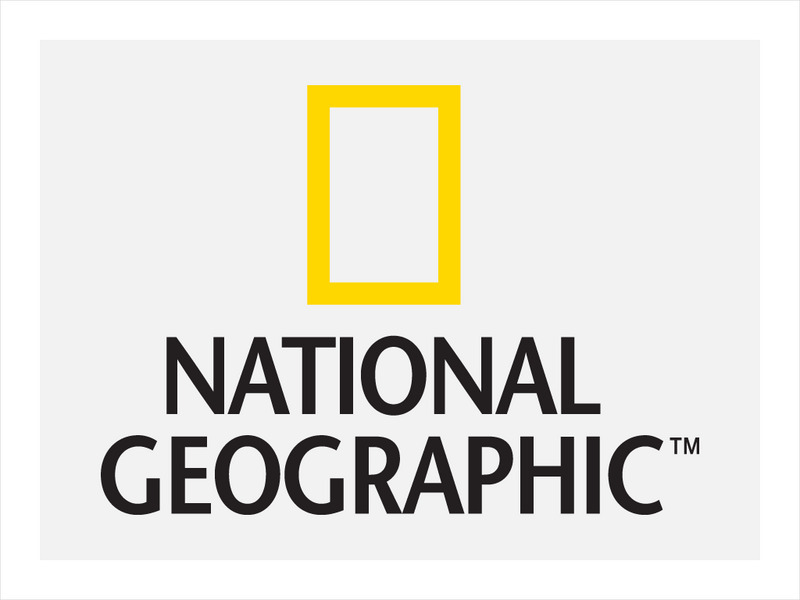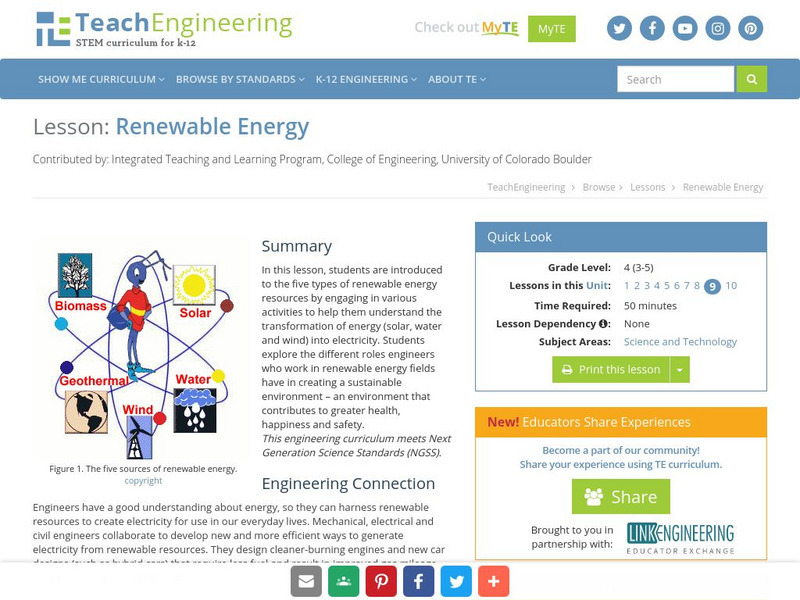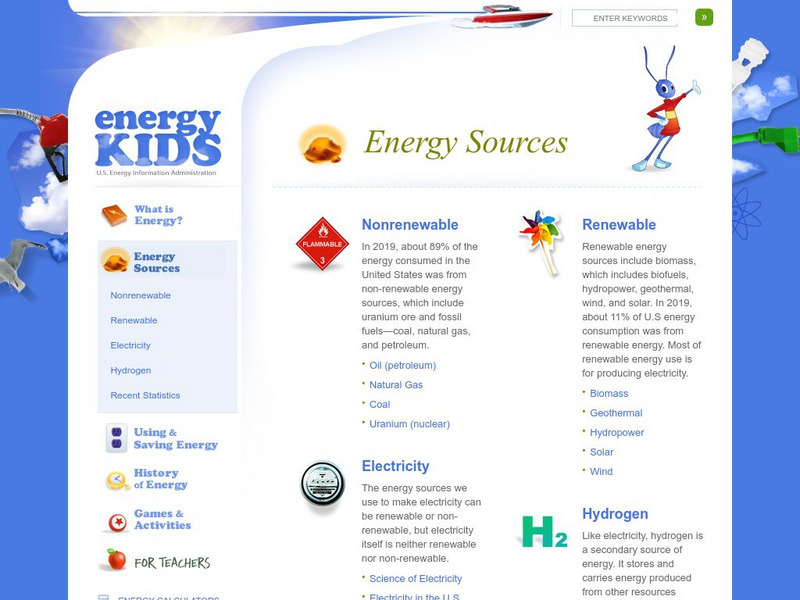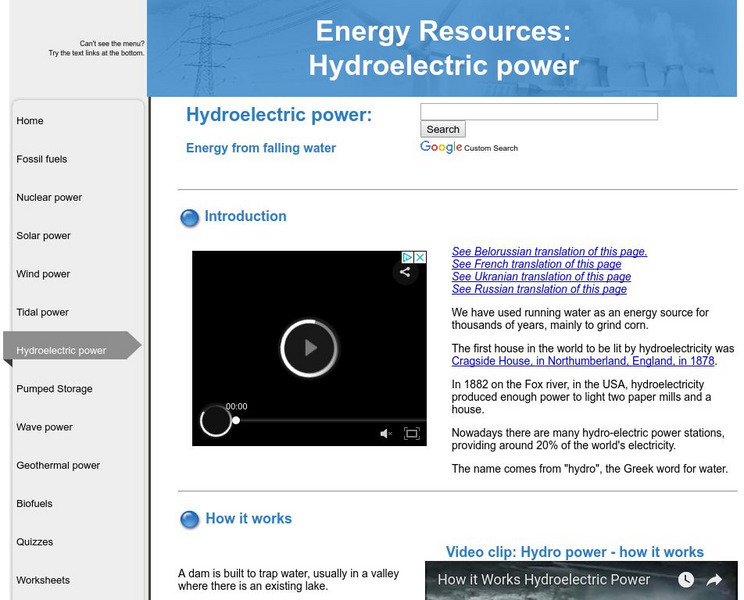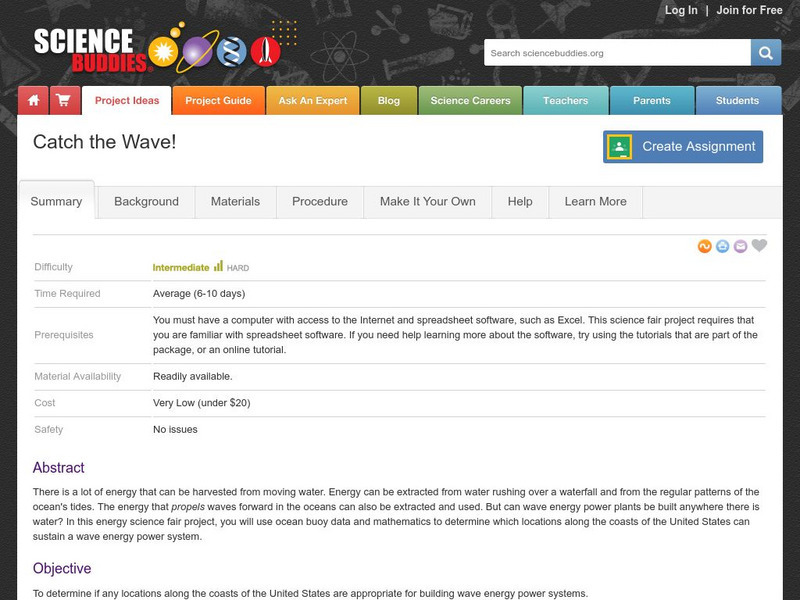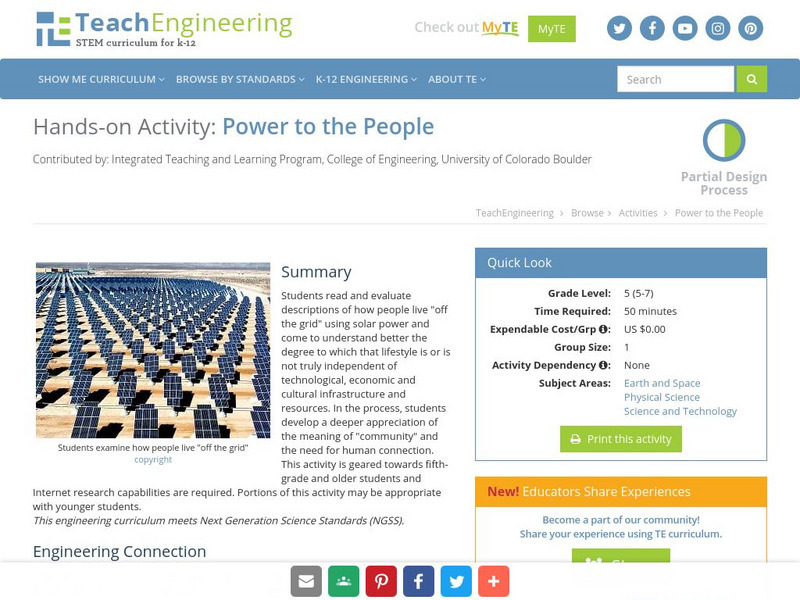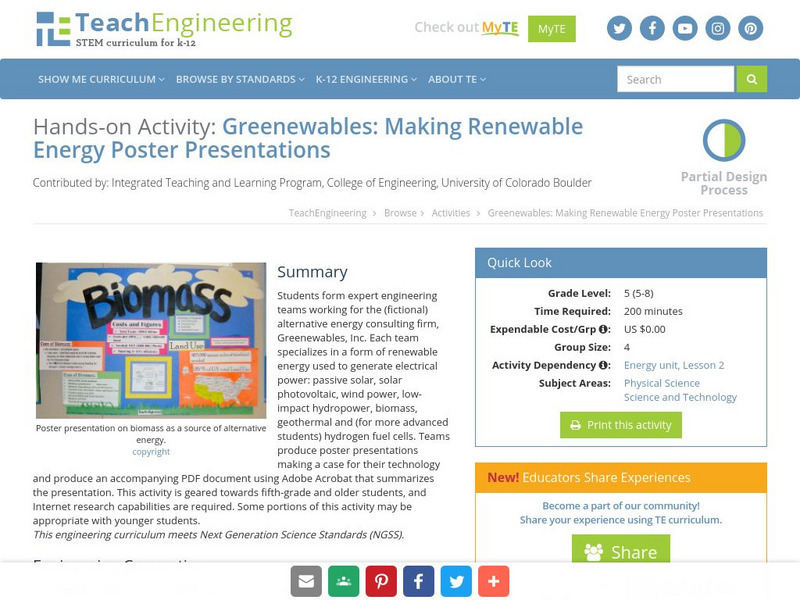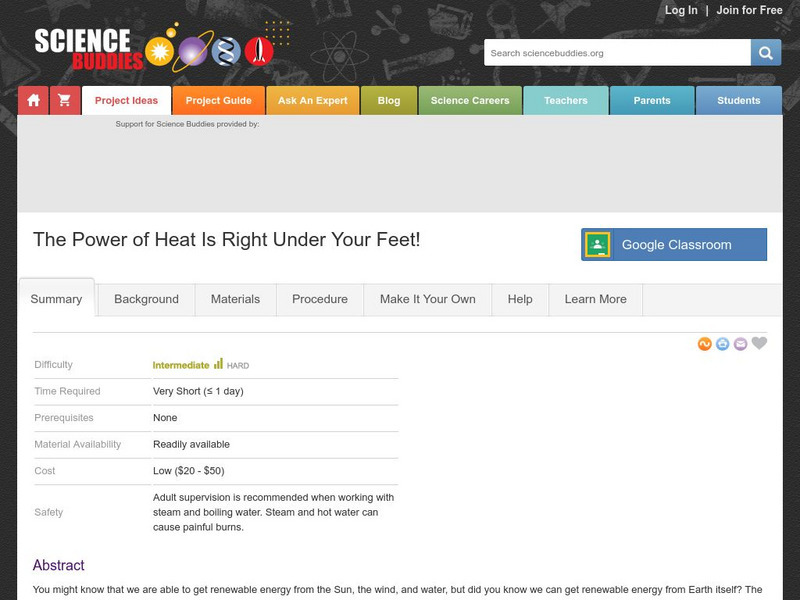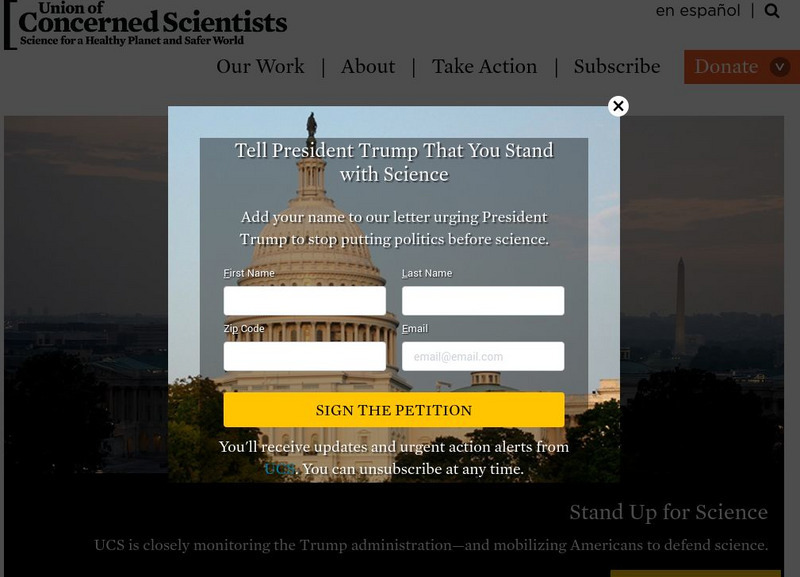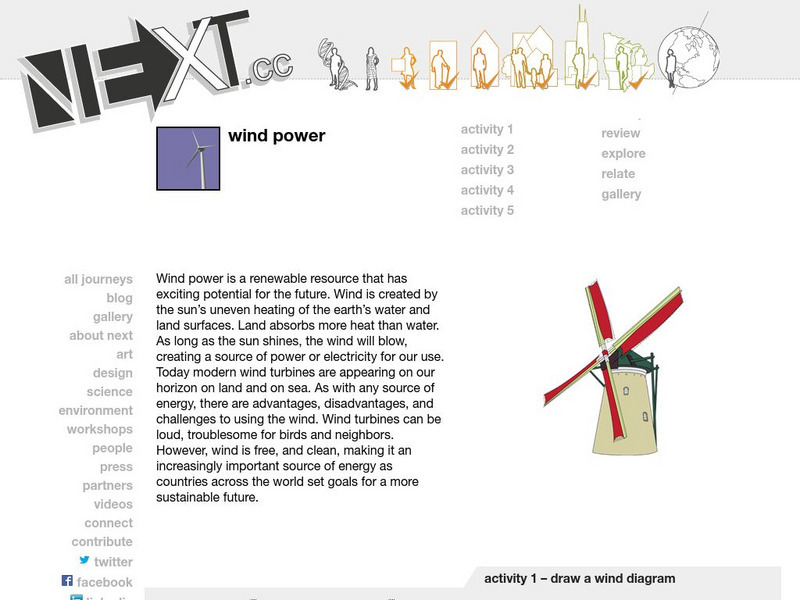National Geographic
National Geographic: Evaluating Other Energy Sources
A comprehensive lesson where students examine the different costs and benefits associated with renewable and nonrenewable sources of electricity. Includes a 22-question interactive module where they look at real-world data and images...
CK-12 Foundation
Ck 12: Earth Science: Renewable vs. Non Renewable Energy Resources Study Guide
[Free Registration/Login may be required to access all resource tools.] Summarizes the key points about renewable and nonrenewable resources. Includes a few questions to check for understanding.
TeachEngineering
Teach Engineering: Renewable Energy
In this lesson, students are introduced to the types of renewable energy resources. They are involved in activities to help them understand the transformation of energy (solar, water and wind) into electricity. Students explore the...
US Energy Information Administration
U.s. Eia Energy Kids: Energy Sources
Find out about energy resources, and what it means to be renewable and nonrenewable sources.
US Energy Information Administration
U.s. Eia Energy Kids: Renewable Energy: Wind
Mankind has used the wind as an energy source for thousands of years. Discover other ways the wind is used to make energy.
CK-12 Foundation
Ck 12: Life Science: 12.29 Renewable Resources
Learn how some renewable resources contribute to alternative energy sources.
Other
Energy Resources: Hydro Electric Power
Alternative forms of energy site showcases Hydro-electric power. Discover how it works, it's advantages and disadvantages as well as whether or not it's considered to be a renewable resource.
Science Buddies
Science Buddies: Project Ideas: Growing Green: How to Extract Energy From Grass
In this energy science fair project, the student will experiment with three types of grasses and determine which variety yields the highest amount of biomass. The Science Buddies project ideas are set up consistently beginning with an...
US Department of Energy
U.s. Department of Energy: Coal: Our Most Abundant Fuel
The U.S. has enough coal to last for the next 200-300 years. So why are we not using more of it? This article describes the different types or "ranks" of coal, the history, and the problems with burning coal for energy.
Alabama Learning Exchange
Alex: Energy and Work Amusement Park Style
This is a instructional activity presenting energy and work. It covers: types of energy, forms of energy, work, law of conservation of energy, and renewable and nonrenewable energy sources. In the activities section, one will find links...
NASA
Nasa: Climate Kids: Huge Machine Harnesses the Tides
Learn how an alternative energy source called tidal energy works, and find out where it is being harnessed.
Science4Fun
Science4 Fun: Solar Energy
What is solar energy? Learn about solar heating, solar electricity generation, and the advantages and disadvantages of solar power.
Ducksters
Ducksters: Environment for Kids: Wave and Tidal Energy
Kids learn about wave and tidal energy and how this renewable power can help the environment. Teach students about this new technology.
Science Buddies
Science Buddies: Catch the Wave!
In this energy science fair project, the student will use ocean buoy data to determine if any locations along the coasts of the United States are appropriate for building wave energy power systems.
US Department of Energy
U.s. Department of Energy: Water Power Program: Types of Hydropower Plants
Learn about the three types of hydroelectric power plants used to capture the energy from water at a hydropower dam site.
TeachEngineering
Teach Engineering: Power to the People
Students read and evaluate descriptions of how people live "off the grid" using solar power and come to understand better the degree to which that lifestyle is or is not truly independent of technological, economic and cultural...
TeachEngineering
Teach Engineering: Greenewables
Students form expert engineering teams working for the (fictional) alternative energy consulting firm, Greenewables, Inc. Each team specializes in a form of renewable energy used to generate electrical power: passive solar, solar...
Science Buddies
Science Buddies: The Power of Heat Is Right Under Your Feet!
You might know that we are able to get free energy from the Sun, the wind, and water, but we can also get free energy from Earth itself. This source of energy is called geothermal energy and it is all about taking advantage of the heat...
Science Buddies
Science Buddies: Waste Not, Want Not: Use the Microbial Fuel Cell to Create Elec
Gross. What is that in the toilet? But maybe it's not just gross. Did you know there are bacteria that digest organic waste and create electrons? What if there was a way to collect those electrons to power a circuit? In this science fair...
Other
Union of Concerned Scientists: Science for a Healthy Planet and Safer World
The official website for Union of Concerned Scientists provides information on environmental issues and suggestions on actions people can take to curb environmental harm.
Science4Fun
Science4 Fun: Hydropower
What is hydropower? Discover how electricity is generated from hydropower, three methods of generating electricity, and the advantages and disadvantages.
Next.cc
Next: Wind Power
Engage in the activities provided to learn how the wind is an important source of energy. Click on the links for further exploration
CK-12 Foundation
Ck 12: Earth Science: Hydroelectric Power Study Guide
Review the main concepts of hydroelectric power with this review guide.
CK-12 Foundation
Ck 12: Earth Science: Wind Power Study Guide
[Free Registration/Login may be required to access all resource tools.] This study guide summarizes key points about wind energy. Includes a few questions to check for understanding.
